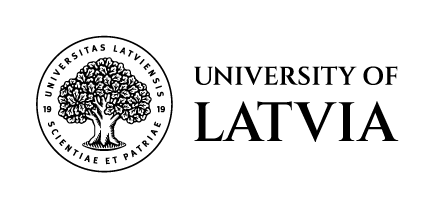Manuscript guidelines
GENERAL INFORMATION
The manuscript must be original – neither published previously nor submitted to other scientific journals. The papers of the journal are double blind peer-reviewed. Manuscript has to be written in Latvian or English. Latvian authors are expected to write a summary in Latvian, if the article is written in English and the other way around. Other authors can submit a summary to the Editorial Board in English which will be translated to Latvian. The manuscript shall be prepared according to the requirements presented below. A manuscript should be 30 000 to 40 000 characters (including spaces) and preferably with no more than five illustrations.
Download Manuscript Guidelines in Microsoft Word format
Technical requirements
- Manuscript should be submitted in .doc or .docx format with the following parameters: font – Times New Roman, text character size – 12 pt, title of the article – 14 pt in bold, chapters – 12 pt in bold. Space between text lines – 1.5 lines.
- Pages must be numbered.
- Text must be written only by using the Latin alphabet; other writing systems, such as Cyrillic, must be converted according to the Latin writing system (after http://translit.cc). For example:
- Figures must be in .jpg, .tiff or .eps format. The resolution of the figures must be at least 300 dpi.
Structure of the article
Title
Title must be in English and/or in Latvian. In English all independent clauses must be written with capital letters. At the end of the title, by using footnote reference (please use “*” instead of a number) author must indicate the project (name and number) within which the paper was prepared, if there is one.
Author(s) details
Name and Surname, scientific degree, affiliation(s) and position, contact address and e-mail must be indicated.
Abstract
In the abstract author must shortly characterize the theme, aim and results of the article, it should not exceed 800 characters (including spaces).
Keywords
Below the abstract five to eight keywords must be indicated which characterizes the paper.
Introduction
In the introduction author defines the theme of the article, problematics, research questions and aim of the study, characterizes the theoretical background and state of research on the subject as well as the topicality of it.
Body text
The article must be divided into chapters with no more than two subchapters. The chapter names must be cantered, and they should not be numbered. If necessary, it is possible to name chapters by using roman numbers or three “*” instead. Both – names of chapters and subchapters must be written in bold and roman (normal/ non-italic).
Mentioning a person for the first-time full name and surname must be written. Afterwards only the initial(s) of the name and full surname must be written. In the titles the full name and surname of the person must be written. After the initial of the name space must be used. Space also must be used if after a period a character follows. For example:
If a dash is used to divide numbers with meaning “from–to”, then spaces should not be used. For example:
For manuscripts in Latvian all symbolic names must be written in roman and quotes in foreign language – in italic without quotes. For example:
For manuscripts in English all symbolic names in English must be written in roman and quotes, thus in foreign language – in italic without quotes. For example:
Conclusions
In the conclusions the author should present the new findings obtained in the study.
References and comments
References and comments must be added as the end-text footnotes. For the system of the references see below.
Figures and tables
Figures (including graphs) and tables have to be numbered, for manuscripts in English figures and tables have to be indicated in the text as follows: “Fig. 1”, “Table 1”, in Latvian – “1. att.” and “1. tabula”.
The description of the figure must be formalized as follows: name of the figure and/or short description, author of the figure (full name and surname), if unknown it should be indicated, source – book, collection, newspaper etc. from which the figure is taken and/or institution – archive, museum, library (if the figure is taken from their collections). Full, original name of the institution must be written when mentioned for the first time, for example, Biblioteca Nacional de España, Madrid; afterwards it must be shortened by indicating as follows: (further – BNE).
In the title of the table the name of the data set shown must be included or a short description of the tendencies seen, name of the table author or institution and year created.
Citations
Citations in both – articles and reviews must be put in quotes. If the citation is short (phrase or one sentence) it must be integrated in the text in italic. If the citation is longer than one sentence, then it should be separated from the rest of the text in the new paragraph and format with excerpts. In this case the citation is also written in italic. If a word or sentence is not written in the citation “[…]” should be included in the text when it has been done.
Summary
In the summary the author shortly characterizes the study and the results. Summary should not exceed 4000 characters, including spaces.

